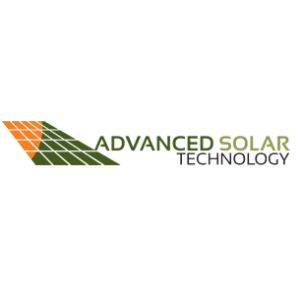What is a Solar Power Inverter?Posted by Adavnced Solar Technology on February 16th, 2023  A solar power inverter transforms the direct current from your solar panels into a more useful voltage for your electrical appliances. It also regulates the grid voltage to protect your system and your batteries from damage. You will need to decide which type of inverter is best for your system based on performance, warranty and cost. It's important to talk with a solar-installation company about what is best for you! SafetySolar power inverters are vital to the operation of a solar system. Without them, your home appliances can’t use the electricity stored in your batteries. Inverters also act as a safety net for your system in case of electrical problems or malfunctions. They turn off when they sense something is amiss and come back on once everything is okay again. A good Solar power inverter has several safety features that help keep your system working safely and efficiently. One of these is a built-in feature called SafeDC that ensures the voltage on your solar panels is reduced to a touch-safe 1V when AC power is shut off. This helps prevent electrical arc faults from occurring, a common cause of fires in solar systems. EfficiencyAn inverter is an important part of any solar power system, converting the DC electricity generated by a solar panel into AC energy that is usable in homes or fed directly into the grid for utility-scale projects. It is also responsible for many other functions, including monitoring and Communicating with the grid. This can help keep the entire system operating at peak efficiency, and alert you if there is an issue with the inverter or any other part of the system that may require service. It also reduces power consumption by reducing the amount of power that is turned on and off while a panel converts its DC to AC electricity. This is called idle current, and can add up to a significant portion of the system's total power consumption. FlexibilityA Solar power inverter converts the DC (direct current) power generated by your Solar panels to AC (alternating current) power that can be used in your home or fed directly into the utility grid. The inverter also monitors your system to ensure that it is producing the most electricity possible, while keeping track of your energy usage and maximizing its efficiency. Flexibility is a key feature of a Solar power inverter, as it helps meet various system needs. This is especially important in utility-scale solar arrays, as a flexible Solar power inverter can help accommodate fluctuations in demand from the grid by using stored energy from battery storage. A flexible solar panel can be twisted or folded in a variety of ways, which makes them more convenient for mounting on a variety of surfaces and locations. They’re often much lighter and thinner than rigid solar panels, making them more portable. AutomationA solar power inverter is an essential device that converts DC electricity from photovoltaic (PV) panels to the AC energy your home uses. Without this converter, you'd have to draw power from the utility grid or use batteries to store extra energy. One of the most important features of a smart inverter is the ability to control its output when there are fluctuations in voltage or frequency on your electrical system. This grid service is called automatic generation control and ensures your energy remains stable even if the rest of the system's supply and demand are fluctuating. NREL recently developed PRECISE, an automated technical interconnection evaluation tool that helps utilities streamline the process of evaluating new rooftop PV systems. It models the distribution feeder and preconfigures advanced inverter modes that provide grid support and minimize energy curtailment, enabling seamless interconnection with much less wait time. MonitoringMost solar power inverter include monitoring features that help homeowners keep an eye on the power output of their system. These features can alert them to error codes and provide power production data via app-based or web interfaces, as well as through Bluetooth. These apps can help homeowners track their power generation over time, and even link their daily production records to local weather conditions. They also allow owners to compare their own solar systems with those of others in their area, a great way to learn about their system’s performance. Like it? Share it!More by this author |


